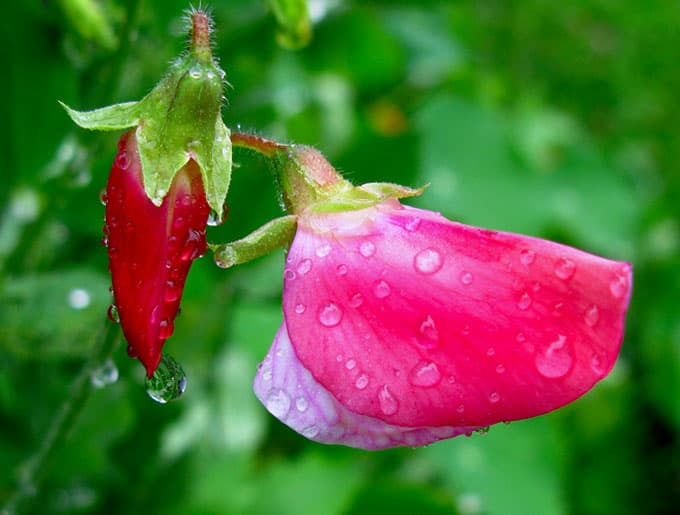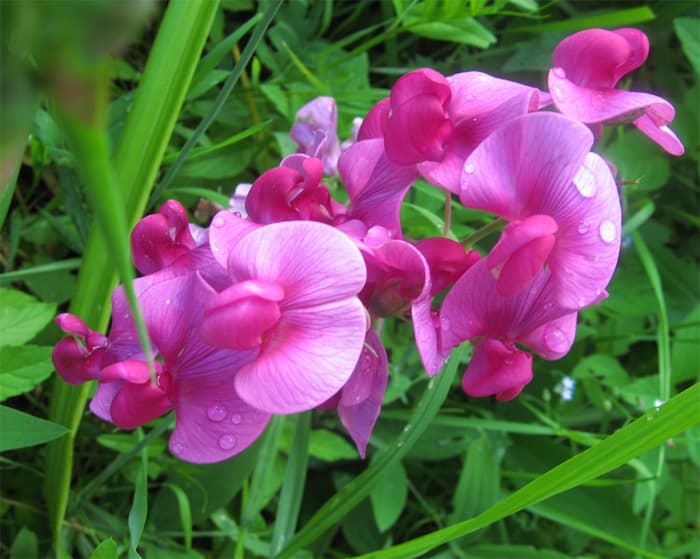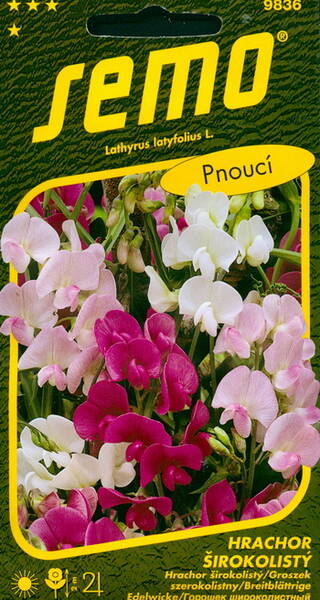Perennial Climber growing to 2m by 2m at a fast rate. It is hardy to zone 5 and is not frost tender. It is in flower from July to September, and the seeds ripen from August to October. The flowers are hermaphrodite (have both male and female organs) and are pollinated by Bees. It can fix Nitrogen. We rate it 1 out of 5 for usefulness. The plant prefers light (sandy), medium (loamy) and heavy (clay) soils. The plant prefers acid, neutral and basic (alkaline) soils. It can grow in semi-shade (light woodland) or no shade. It requires dry or moist soil and can tolerate drought.
Habitats and Possible Locations: Meadow, Woodland, Sunny Edge, Dappled Shade, Shady Edge, Ground Cover.
Cultivation details An easily grown plant, succeeding in any moderately good garden soil, whether acid or alkaline. Prefers a position in full sun but tolerates part day shade. Succeeds in dry soils and is drought tolerant when established. Grows well on dry slopes. Plants can be grown in quite coarse grass, which can be cut annually in the autumn. Plants are hardy to at least -10°C.
A very ornamental plant, there are many named varieties. It is fast-growing and, when in a suitable position, can become invasive. Plants climb by means of tendrils. Resents root disturbance and can take a year or two to settle down after being moved. This species has a symbiotic relationship with certain soil bacteria, these bacteria form nodules on the roots and fix atmospheric nitrogen. Some of this nitrogen is utilized by the growing plant but some can also be used by other plants growing nearby.
Propagation: Pre-soak the seed for 24 hours in warm water and then sow in early spring in a cold frame. When they are large enough to handle, prick the seedlings out into individual pots and plant them out in the summer. If you have sufficient seed, then it can also be sown in situ in mid spring. Division in spring. It may not transplant well so care should be taken.


Perennial sweet pea, perennial peavine, broad-leaved everlasting-pea, everlasting pea.
* Perennial peavine - Lathyrus latifolius L. = Lathyrus megalanthus.
A perennial ornamental plant from South-Eastern Europe, introduced into cultivation in the 16th century.
This ornamental perennial herbaceous vine is often called perennial sweet pea. Although they are indeed close relatives, the flowers of this vetch, unfortunately, are odorless.
Stems up to 200-400 cm long, climbing, attached to the support with the help of tendrils. Leaves with one pair of oblong-oval, whitish leaflets below. Flowers are large, bright pink-carmine or white, collected in 3-10 in loose, racemose inflorescences, located in the axils of the leaves. Blooms from June 80-90 days. Vigorous growth, densely foliated shoots and abundant colorful flowering allow the vetch to compete even with clematis. It is a pity that it cannot boast of a variety of colors, but the full pink range is also very attractive.
Propagated by seeds and division of the bush. However, it does not tolerate transplantation in adulthood, so one-year-old seedlings take root better.
The plant is winter-hardy to -29°C. It overwinters without shelter.
It can become a garden decoration if you plant it on the lawn or near the wall of the house. From it you can make living garlands and cones in flower beds, flowering walls and screens.
Reproduction: the seeds are quite large, covered with dense shells. If the shell is intact, they retain their germination for up to 10 years, even at room temperature. If the shell is damaged, the seeds die within a year. Scarification (breaking the seed covers) is necessary for germination. The simplest method is soaking in warm, almost hot water. Swollen or hatched seeds are planted either in a permanent place or grown in pots. Seedlings are unpretentious, develop quickly. Vegetative propagation methods are complex and are rarely used in practice. The root system is deep and branched, which makes transplantation difficult.
Use: for vertical gardening, in group planting on the lawn with support, in cutting for small bouquets.












